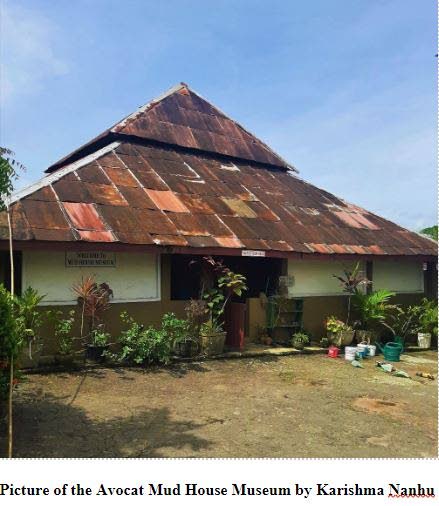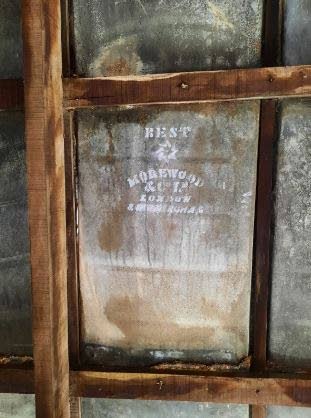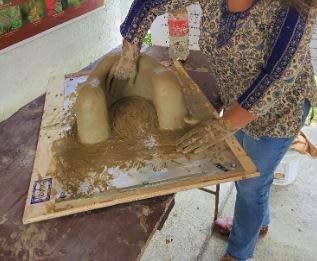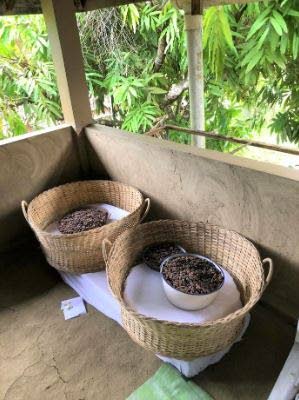138-year-old mud house steady as a rock in Avocat

BUILT in 1885 by indentured East Indians, the Avocat Mud House Museum in Fyzabad has become a historical treasure.
It is one of only a few such structures that remain intact nationwide.
As this country celebrates Indian Arrival Day on Tuesday, Karishma Nanhu, heritage preservation, and research officer of the National Trust of TT, explored the history of the Mud Museum at Siparia Old Road in Avocat, including the people involved in its survival.
The structure, originally a home, was built by Taitree, a hard-working Indian woman who went to Siparia in the late 19th century to work on a cocoa estate owned by a Venezuelan planter after working on a sugar estate in Couva.
Nanhu said Taitree’s story was passed on through oral history.

She had a contractual arrangement to plant small cacao plants and was paid 25 cents per plant that survived and bore cocoa. When the Venezuelan owner left Trinidad, he sold his estate to his workers, making them small proprietors.
Nanhu said using her savings, Taitree was able to buy 17.5 acres of land, where she planted cocoa and coffee.
“She was an industrious woman, and she also started a cart/buggy transport business. When she left Couva, she parted ways with her first husband, and their three children eventually came to live with her in Siparia,” Nanhu said.

“She had one son, Chatoor, and two daughters. Her grandson, Dr Ramcoomair Chatoor, Chatoor’s son, would initiate efforts to preserve the mud house. She had a second husband in Siparia.”
Nanhu cited several documents on the importance of land ownership being a reflection of economic independence and power for East Indian women in that era.
She also quoted several authors about Taitree working hard and saving her money to build the mud house. Nanhu quoted Taitree’s great-granddaughter Rajwantee Bullock concurring that women were generally paid less than men.
The museum is one of the two known remaining mud houses in Avocat.
Nanhu recalled that when the Indians completed their indentureship contracts and were able to build their own homes, this style was familiar to them, as it was popular in India.
“These may have been built with slight variations since the Indians brought their knowledge and traditions from their different Indian villages.”
Nanhu quoted the late architect John Newel Lewis, who said a similar type of house already existed in Trinidad, the ajoupa, which he argued was the primary vernacular style in the country. Before the arrival of the Indians, the Amerindians/First Peoples had already built ajoupas.
“While the ‘Indian Ajoupa’ was similar to the Trinidadian Ajoupa there were differences in the layout of the rooms and the use of clay as the main material,” she said.
“Another type of housing that the Indians introduced to Trinidad was the tapia house. Tapia houses have bamboo or cane woven into the walls which make them different from mud houses.”
The mud house building uses mud compacted with gobar (cow dung) which acts as a binder.
Leepaying – the application of a mixture of gobar, sapate mud and water to the walls and floors by hand – is done on the walls and floors of the museum every six weeks-two months
The walls are 22 inches thick at the base.
“When the site was initially cleared for the building, four trees were left in four corners and the mud was packed around the tree trunks. Three ponds were dug to obtain mud, but only one remains today,” Nanhu said.
“The house design has an open wrap-around veranda and a double gable roof. This allows the cool air to pass through.”
A low concrete wall around the house, about three feet tall, replaced the original mud wall in 1956.
She added, “This was done to protect the mud house from water damage after the road was built in 1952.”
The roof, Nanhu said, is made from tin and the original tiles, which were shipped from England.
“Sixty years ago, the tiles were repositioned to address the leaks and the original wood was changed as it was termite infested. It was replaced with mahogany from the estate. The roof is currently leaking.”
Nanhu added, “Today, the Avocat Mud House Museum is the only known mud house that is open to the public in the area. It is currently owned by the Ramcoomair Chatoor Memorial Trust (after Taitree’s grandson).”

His wife, Dr Irene Chatoor, set up the trust.
The museum hosts chulha-making (fireside) classes. People can also volunteer to help with leepaying, even if they have no prior experience.
To book a tour, attend a class, or volunteer, people can call (868) 776-0753 or e-mail the museum at mudhousemuseum@yahoo.com.
Anyone wishing to learn more about the mud-house museum can also e-mail the National Trust at info@nationaltust.tt.


Comments
"138-year-old mud house steady as a rock in Avocat"